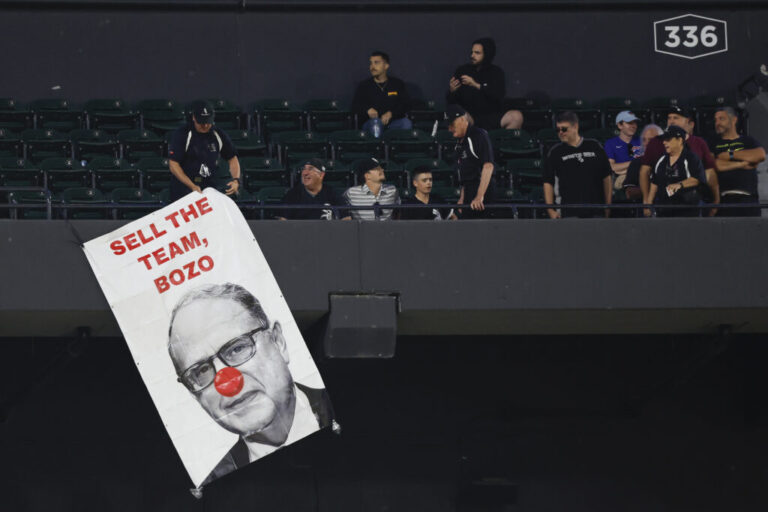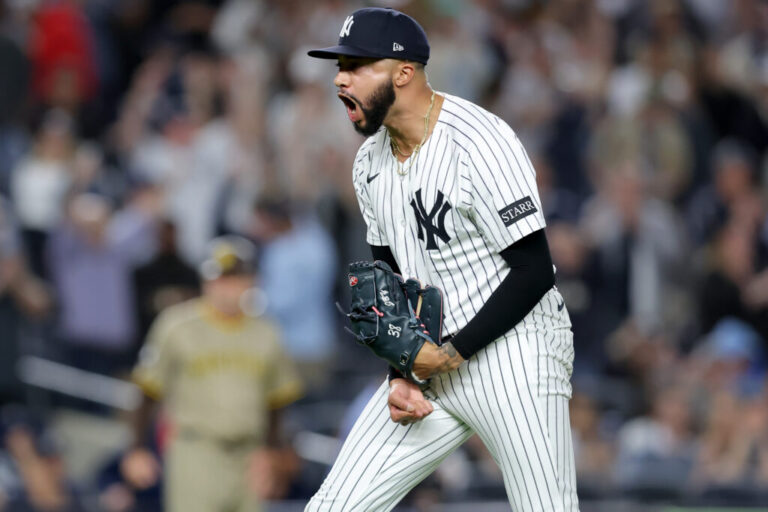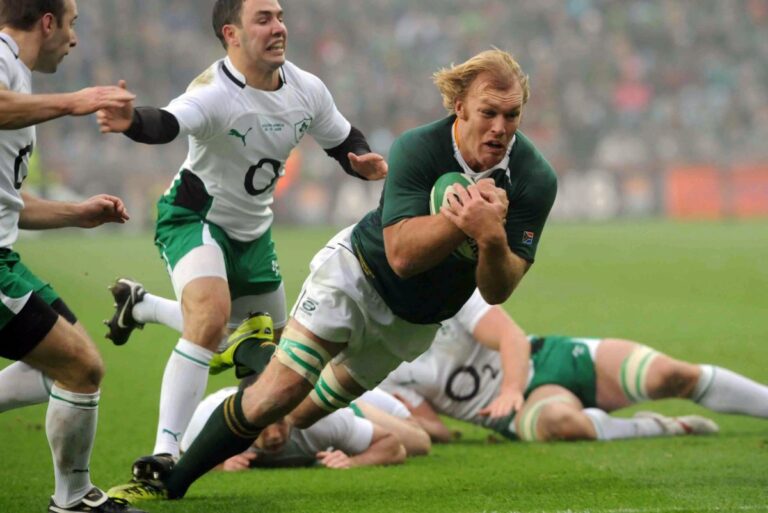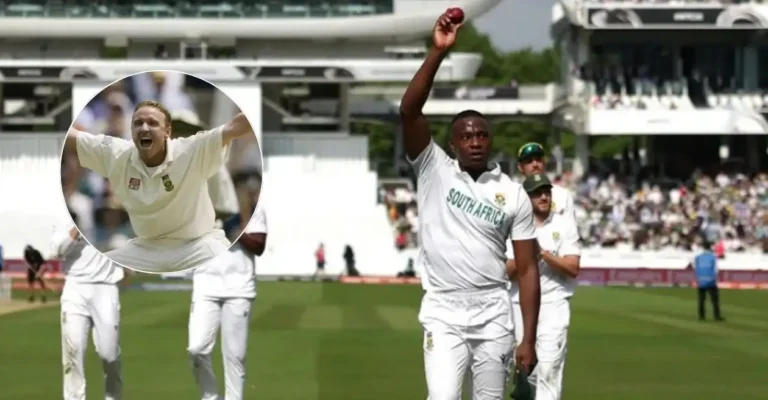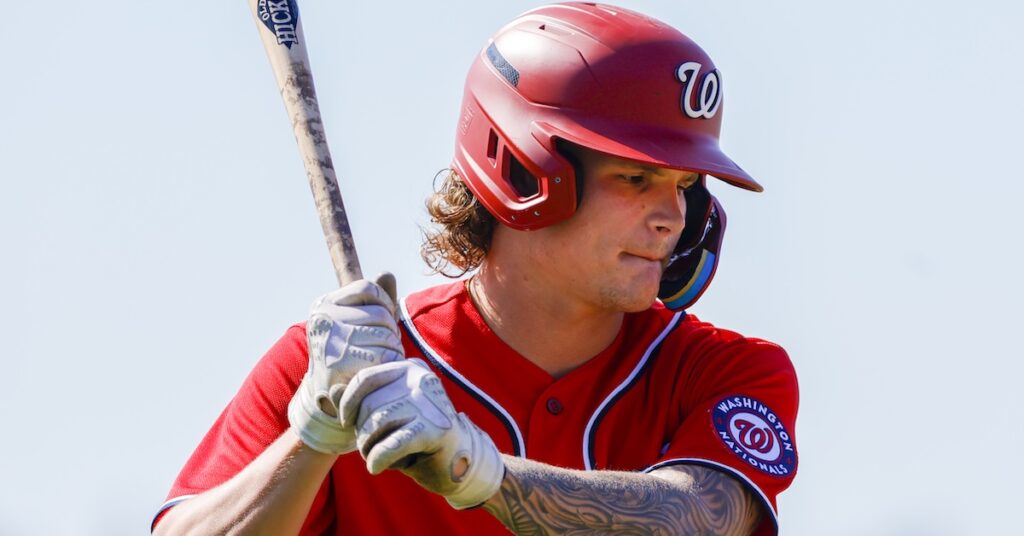
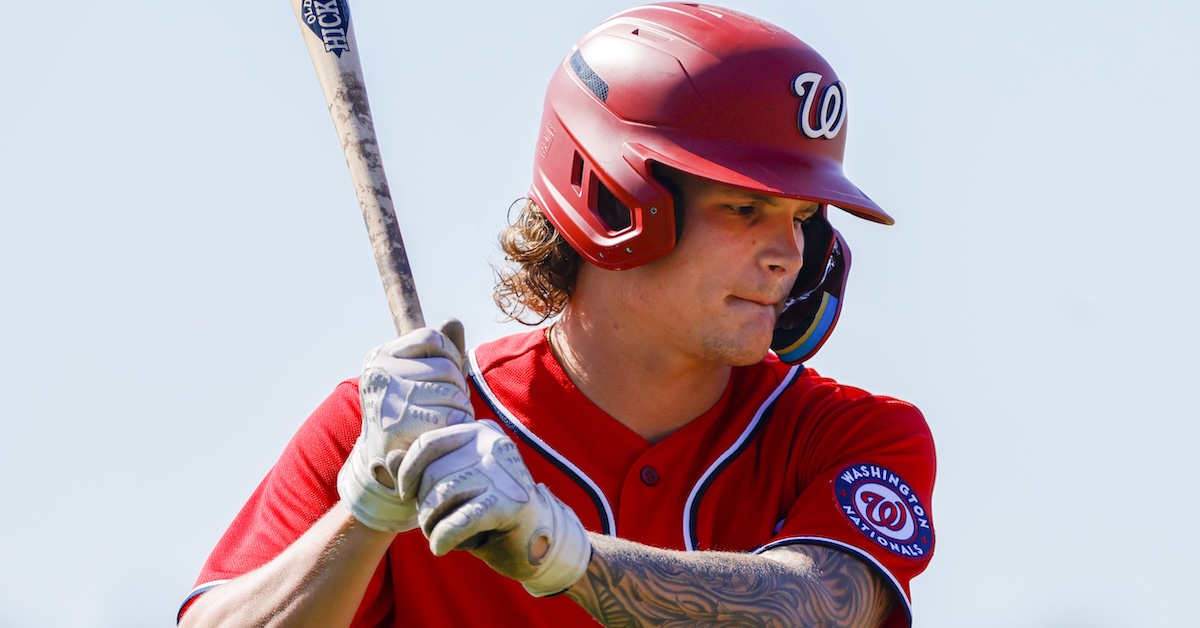
Brady House is a high-ceiling slugger knocking on the door of the big leagues. Drafted 11th overall by the Washington Nationals in 2021 out of Winder-Barrow High School in Winder, Georgia, the 22-year-old third baseman is slashing .299/.352/.521 with a 128 wRC+ over 256 plate appearances with the Triple-A Rochester Red Wings. Befitting his sturdy 6-foot-4 frame and plus power from the right side, House has hammered 14 doubles and 12 home runs.
His approach might best be described as old school. Asked about his M.O. at the plate, the promising youngster told me his primary goal is simply to hit the ball hard and get on base. And he definitely hits the ball hard. His max exit velocity this season is 112.4 mph, which ranks in the 90th percentile at the Triple-A level. As for his ability to leave the yard, House doesn’t hunt for homers so much as he buys into the process.
“I hit the most home runs when I go up there not trying to hit a home run,” he said. “If I go up there just trying to get a base hit, it just ends up accidentally happening.”
It’s not by accident that House hits home runs in all directions. He called using the entire field an important part of his approach, and the data back up the words. His spray chart shows three homers ripped to right, four blasted to center, and five launched to left. His overall pull rate is actually a career-high 49.4%, but that’s not necessarily by design. While an adjustment is part of the equation, how he’s being attacked is playing a bigger role in his pulling more pitches.
“I’m trying to be more on time with the fastball, catching the ball out in front of the plate rather than letting it get in on me,” House said. “That way I have some room to work with. I mean, I’m just trying to hit it wherever it’s pitched. I feel like I’ve been getting pitched in a lot this year.”
What House said about having “room to work with” piqued my interest. Most often, hitters say letting the ball travel allows them more opportunity to recognize pitches and react accordingly.
“I’ve heard a lot of people say that,” House replied. “But in the past, I’ve kind of let the fastball get deep, so even though I’m hitting it hard, I’m getting caught up in my hands being back instead of getting extended. For me, it’s more about being on time. I’d rather be on time for a fastball and early for an offspeed. Of course, adjustments are made every game, so I guess it just depends on how I’m feeling.”
The slugger sounded satisfied when addressing the percentage of offerings he’s propelling into the air, although at 47.9%, his groundball rate isn’t exactly ideal for someone with his tool box. As for focusing on batted-ball metrics to unlock more of his power potential, that isn’t how his mind works.
“I can tell if it’s hit hard, if that makes sense,” House said. “I’m not really into the numbers. Things like launch angle… that’s a little over my head. I do like video, but outside of that, I like to keep things simple.”
Eric Longenhagen’s assessment of House, which is influenced by Statcast metrics, is largely bullish. At the same time, our lead prospect analyst isn’t without concerns.
“The data is in agreement on both the whiffs — soundly below-average contact, slightly below-average plate discipline — and the power,” Longenhagen told me. “House’s hard-hit rate has been comfortably plus, especially for his age. He has plus power and destroys mistakes, [but] I’m a bit bearish relative to his xSLG and xwOBA because I think big league pitchers will do a better job attacking his weaknesses.”
Longenhagen sees the shortstop-turned-third-baseman’s glove as a strength. In his view, House is “one hell of a defender,” gifted with plus range, footwork, and arm strength.
Jumping back to the bat, cutting down on his strikeout rate (currently 25.8%) is among House’s goals. He feels a recent mechanical tweak is a step in the right direction.
“I’ve lowered my hands,” House said. “Unknowingly, they had gone up. That was in spring training. I mean, I guess I knew I had them up higher, but I didn’t think it was a problem until I realized it was a problem. I was struggling a little bit last month.” From May 18-24, House went 4-for-23 (.174) with no home runs and nine strikeouts; since then, he is 20-for-51 (.392) with four homers and 11 strikeouts. “Lowering them,” he said, “has helped me be a little more direct to the ball.”
And then there are his 7.4% walk rate and 32.5% chase rate. Asked what he most needs to work on, House more or less echoed Eric’s concerns. A predisposition to overaggressiveness is a hurdle he’ll have to overcome if he hopes to flourish at baseball’s highest level.
“I don’t think I’m bad at it, but it would be my plate discipline,” House said. “I’m a hitter that swings a lot. I like to swing, and sometimes that can hurt me if I’m not controlling the zone. It’s hard for me to go up there and want to take pitches, because I’d rather hit the ball than take. It’s a tough habit to break, but I’m working on it.”
Nationals fans are clamoring for House to be called up to the big leagues, and there is a good chance they’ll get their wish sooner rather than later. Once it happens, there will be a lot for him to prove — that comes with the territory when you’re a highly touted former first-round pick. Can House be a building block in Washington? The foundation is there, but rough edges remain.

